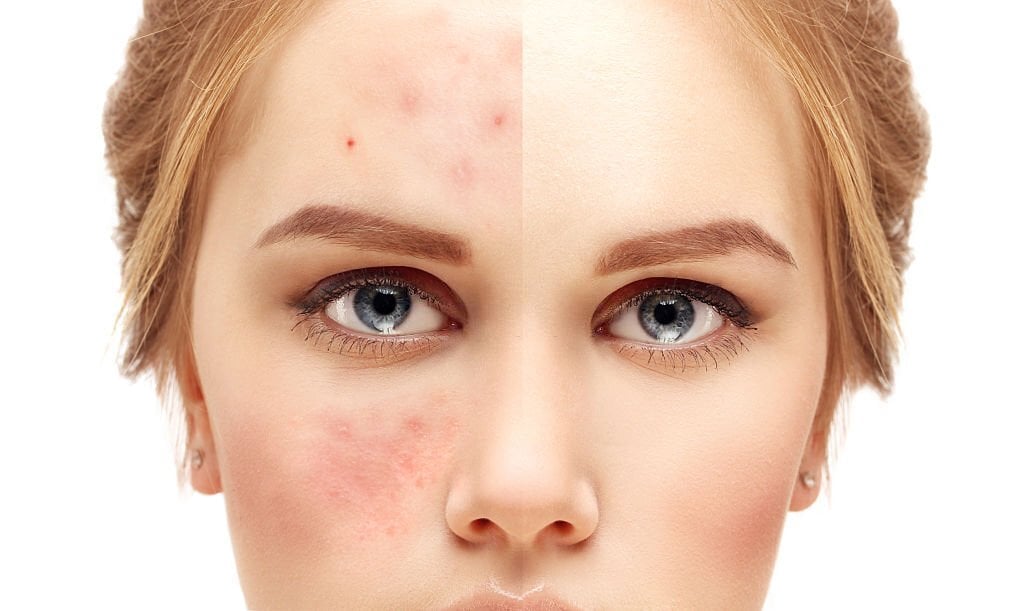Skin infections are a common issue for many people. But it is important to know how to identify and treat them correctly. In this blog post, we will discuss the most common types of skin infections. Treatments for them, and how to prevent them. By the end of this post, you will have a good understanding of how to identify. And treat common skin infections.
Read More Article: Dr. Brad Yentzer Dermatology
Common Types Of Skin Infections
Skin infections are a common problem that can range from mild to severe. To determine the best course of treatment. It’s essential to identify the type of skin infection. This section examines various skin infections. How to identify them, and treatments for them.
The initial step in treating any skin infection is proper identification. Differentiating between bacterial, fungal, and viral. And parasitic infections can aid in selecting the right treatment for the condition. For example, bacterial infections like impetigo. Or Staphylococcal Scalded Skin Syndrome typically manifests with redness. And itching, while fungal infections like ringworm. Or athlete’s foot usually have dry patches on the skin. Viral and parasitic infections typically present with bumps. And intense itching, respectively.
Several treatments are available for skin infections. including over-the-counter. And prescription medications. While natural remedies like tea tree oil can provide relief for certain bacteria. And fungal infections, consulting a doctor first is essential if symptoms do not improve.
If home remedies fail, or the infection worsens, it’s vital to seek medical attention. Proper medical intervention can be done immediately once a doctor confirms the type of infection through diagnosis via physical examination and lab tests.
Taking preventive measures to avoid skin infections is essential. Maintaining cleanliness, avoiding contact with infected individuals, and wearing protective clothing when necessary are some of the ways to reduce the risk of skin infections. Eating a healthy diet and getting enough sleep is also vital in preventing skin infections. By following these steps, recognizing common signs and symptoms, seeking immediate medical attention when needed, and taking preventive measures, you can reduce the chances of developing complications from skin infections.
Treatments For Common Skin Infections
Skin infections are common and uncomfortable. Therefore, it’s crucial to identify and treat them effectively. In this article, we will discuss the most prevalent skin infections, their causes, and potential treatments.
The first step is to understand the type of skin infection you have, as it can be caused by bacterial, viral, fungal, or parasitic organisms. Bacterial skin infections, such as cellulitis, require clinical care from a healthcare professional for proper diagnosis and treatment. Viral skin infections, caused by herpes, HPV (human papillomavirus), or chickenpox, and fungal skin infections may include athlete’s foot or ringworm. Parasitic skin infections, such as scabies or head lice, must also be identified to determine the right course of treatment.
Different treatment options are available once you know the type and severity of your skin infection. For mild cases, you may use over-the-counter medications or home remedies like tea tree oil. However, severe cases may need medical attention from a physician to get rid of them completely and avoid future occurrences. Note that certain topical medications should only be used under the guidance of a doctor since they can worsen your condition if not appropriately used.
Furthermore, some types of skin infections, like cellulitis, require immediate medical care as they can quickly spread if left untreated. These types may necessitate appropriate antibiotics prescribed by a doctor.
How To Determine The Type Of Infection And Appropriate Treatment Options
Identifying and treating common skin infections can be confusing, but it is important to understand the different types and how to properly take care of them. Knowing the common skin infections and their symptoms, understanding the key differences between bacterial, viral, fungal, or parasitic infections, recognizing when to seek medical advice, exploring treatment options (including home remedies and prescription medications), being aware of potential side effects, taking active steps to reduce your risk of infection, are all key components in helping you identify an infection and administer the correct treatment.
Skin infections can be caused by bacteria, viruses, fungi, or parasites. Many skin infections can be managed with over-the-counter (OTC) solutions or home remedies; however, some may require medical treatment. To diagnose a skin infection accurately, healthcare providers usually conduct a physical exam as well as ask about symptoms. The type of treatment for each respective infection depends on both its type and severity.
Common types of bacterial skin infections that require clinical care include cellulitis (redness with swelling), impetigo (blisters filled with pus), boils (deep abscesses in hair follicles), and folliculitis (infection at the base of hair follicles). Fungal infections such as athlete’s foot/tinea pedis, jock itch/tinea cruris, ringworm/tinea corporis, and yeast infections/candidiasis also require clinical care. Viral skin infections sometimes require medical treatments such as warts caused by human papillomavirus (HPV), molluscum contagiosum caused by a poxvirus, herpes simplex virus that causes cold sores, shingles caused by the varicella-zoster virus, chickenpox which is also caused by the varicella-zoster virus. Parasitic Skin Infections need medical treatments such as scabies which are caused by mites burrowing into your skin, bed bugs infestations, lice infestations, etc.
Must Read Article: Pregnancy And Skin Care-Finger Lakes Dermatology’s Advice For Expectant Mothers
Preventing Common Skin Infections
Skin infections caused by bacteria, viruses, or fungi are a frequent occurrence. Identifying signs and symptoms helps to determine successful treatment options. Understanding how infections develop is essential to practice good hygiene. Consistently wash your hands, use gloves with potentially contaminated materials or substances, and avoid towel sharing, which can limit contamination. If you suspect an infection, discover the most effective treatment options, like antibiotics for bacterial infections and antiviral medicines for viral cases. Always seek medical guidance if an infection worsens or continues over time. Alongside medical treatments, additional prevention methods include practicing basic hygiene, washing clothing and bedding regularly, sanitizing hands when soap and water are inaccessible, and using protective clothing when applicable. Be mindful of various types of skin infections, contagions in particular, such as impetigo to spot signs and symptoms early.
To Summarize
Skin infections are a common problem requiring proper identification and treatment. Bacterial, fungal, viral, or parasitic infections may cause different signs and symptoms that must be correctly identified for appropriate treatment. Various treatments, from over-the-counter medications to home remedies such as tea tree oil, are available; however, medical attention may be necessary for severe cases. Maintaining cleanliness and avoiding contact with infected individuals are crucial preventive measures to reduce the risk of developing skin infections. Identifying the signs and symptoms of common skin infections quickly. And treating them efficiently by following these steps leads to better results in the long run.


